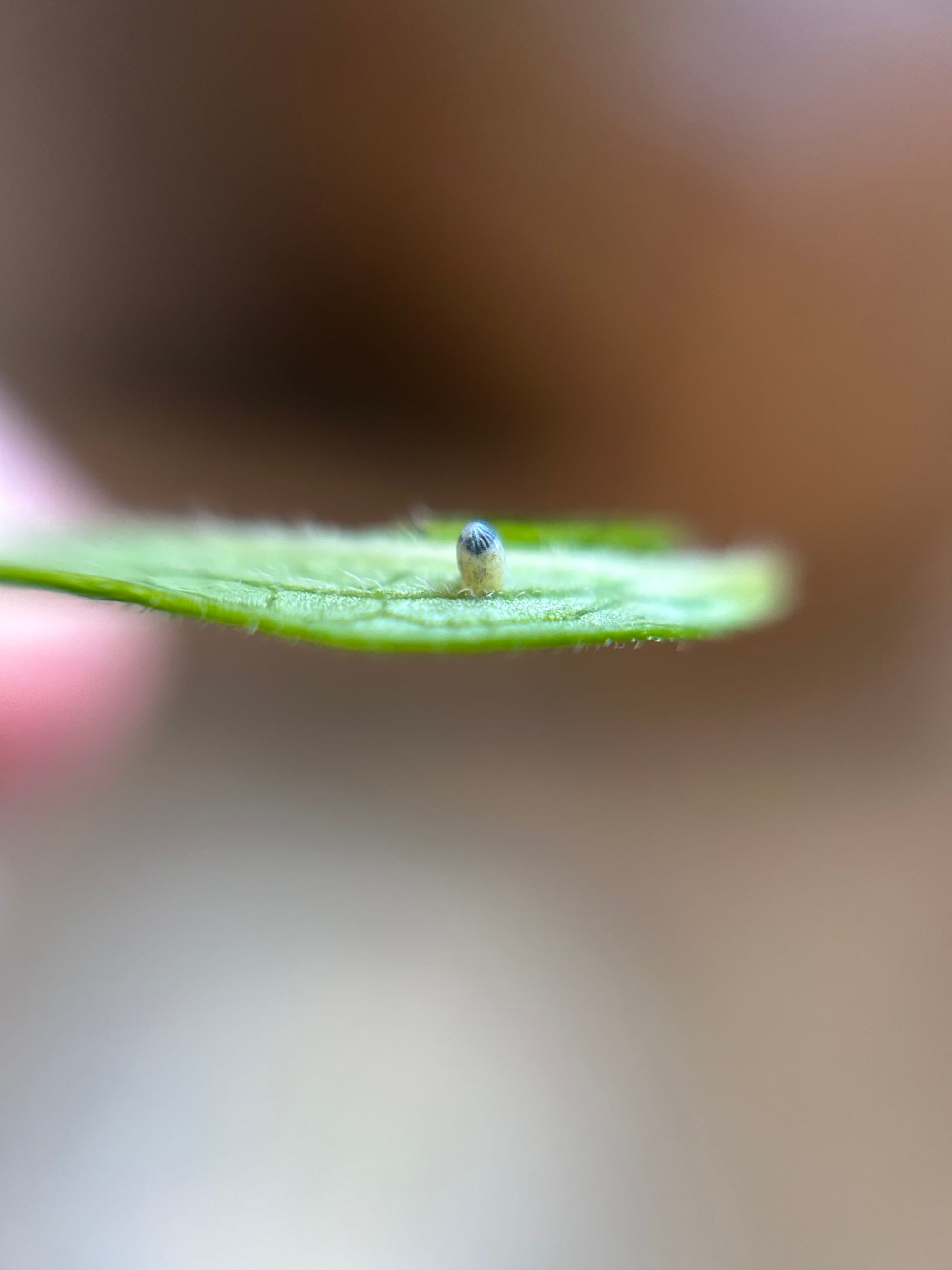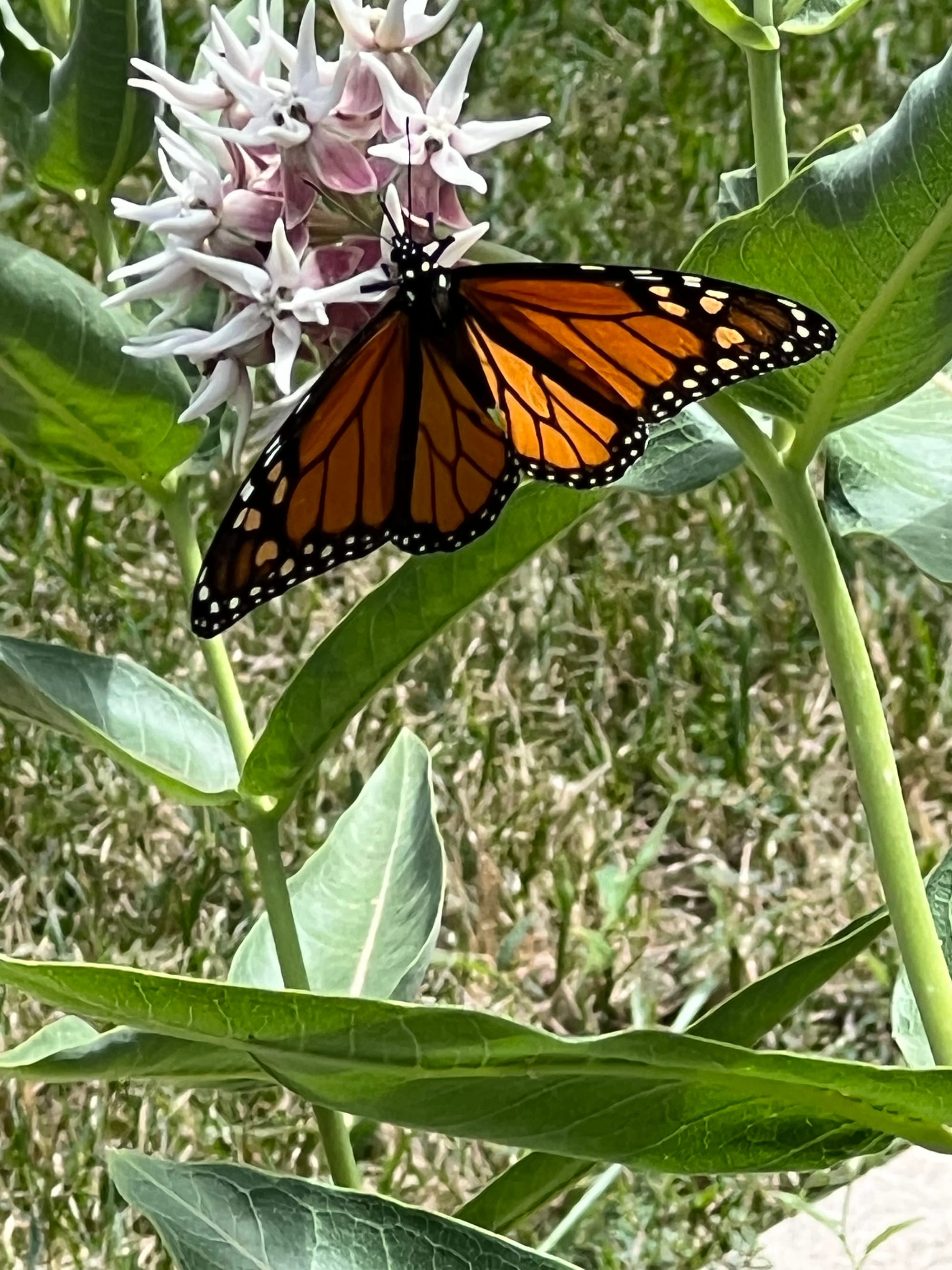Monarch Butterflies and Milkweed: a Co-evolutionary Wonder
By Samantha Ingram
Monarch butterflies, Danaus plexippus, with their vibrant orange and black wings with intricate veining, are a breathtaking spectacle and a crucial component of our ecosystem. Their fascinating life cycle and co-evolutionary relationship with Asclepias species, commonly known as milkweed, shed light on the delicate balance of nature. Read along with me and explore the intertwined existence of monarchs and milkweed and how humans can contribute to ensuring the survival of these magnificent creatures!
Co-evolution with Milkweed:
Monarchs and milkweed share a remarkable co-evolutionary relationship. The milkweed plant contains toxins (cardenolides) that harm many animals, but monarch caterpillars have developed an immunity to these toxins. In fact, the caterpillars store the toxins in their bodies, making them distasteful and toxic to predators—a brilliant example of mutual adaptation.


The Monarch Life Cycle:
The life cycle of monarch butterflies is a captivating journey that encompasses four stages: egg (freaking tiny, like literally the size of the tip of a sharpened pencil), larva (caterpillar: 5 instars/skin shedding phases), pupa (chrysalis), and adult butterfly. Female monarchs lay their eggs exclusively on milkweed plants, as they provide the necessary sustenance for the developing caterpillars.

Human Impact on Monarchs
Despite their remarkable adaptations, monarch butterflies face numerous threats due to human activities. Habitat loss, pesticide use, insect predation, and climate change all contribute to the decline of monarch populations. As urbanization expands, the availability of milkweed diminishes, disrupting the delicate balance that monarchs rely on for their survival.
What Can Humans Do:
1. Plant Milkweed:
We can contribute by planting native milkweed species in our gardens and yards or in designated areas.
2. Avoid Pesticides:
Limiting the use of pesticides in gardens and agricultural areas is essential to protect both monarchs and their vital milkweed habitats. This also helps to save our native pollinators!!
3. Support Conservation Efforts:
Getting involved with local conservation initiatives and supporting organizations dedicated to preserving monarch butterflies can make a significant impact.
4. Raise Awareness:
- Educating others about the importance of monarch butterflies and their co-dependence on milkweed encourages collective effort to ensure their survival.
Monarch butterflies and milkweed exemplify intricate co-evolutionary relationships, showcasing the beauty and fragility of nature. As societal members of the environment, we must take action to preserve this delicate balance. By planting milkweed, avoiding harmful pesticides, supporting conservation initiatives, and raising awareness, we can contribute to the ongoing survival of monarch butterflies, ensuring that future generations continue to marvel at the awe-inspiring sight of these graceful creatures in flight.
I have become obsessed with finding monarch eggs and raising them to maturity to release them back into nature! If you are curious to know more, please feel free to reach out to me on Instagram!(@sam.ingram.botany).
Resources:
https://www.fws.gov/species/monarch-danaus-plexippus
https://bugguide.net/node/view/540
https://animaldiversity.org/accounts/Danaus_plexippus/
https://youtu.be/xskn0OCou80?feature=shared
https://www.jstor.org/stable/j.ctvc775wc